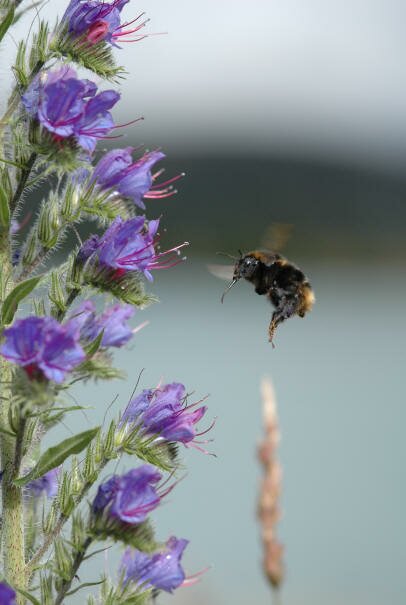|
Wildflowers have become scarce in the countryside because we've lost many traditional habitats like hedgerows, hay meadows and chalk grassland. The extensive use of pesticides in farmland has also drastically reduced wildflower numbers. As a result, wildlife gardens have become a stronghold for some bumblebee species. Wherever you live in the UK, you should be able to attract at least 6 bumblebee species to your garden, and perhaps as many at 10.
Bumblebees need flowers throughout the Spring and Summer (March-Sept), and these need to be the right kinds of flowers. Exotic or highly cultivated garden flowers are largely unsuitable, as they either produce little pollen and nectar, or keep it hidden away from the bees. In particular, most annual bedding plants (e.g. Pelargonium, Begonia, Busy Lizzies) have little nectar to offer bees or other wildlife. Instead, why not try growing traditional cottage garden flowers and native wildflowers. Many of these thrive and look superb in the garden. They are also easy to grow, generally being hardy and much more resistant to slugs and disease. Bumblebee species differ in the length of their tongues, and as a result prefer different flowers, so it's important to grow a range of different things.
Below you'll find a selection of both garden and wild flowers that will bloom throughout the year. They are all types that bumblebees love, and will cater for both long and short-tongued species. If you have room for even one or two of these they will attract many bees. Most of these plants will also attract a range of other interesting insects to the garden, including butterflies and honeybees.
|

Viper's bugloss (Echium vulgare)
Perhaps the very best plant to attract bumblebees to your garden. Much loved by almost all species, and it looks great too. Flowers June-August.
|